Urban Tree Care
Understand the challenges that urban trees face, and discover what it takes to care for an urban forest.
Compared to trees growing in their natural environment, urban trees are subject to more stress. Trees growing in cities are generally more exposed to the extremes of temperature, moisture and pollutants. The urban soils they grow in are also likely to be less rich in nutrients. Construction activities and vehicles may occasionally damage the roots, trunks and branches of trees, and development works may reduce the available growing space of existing trees. In addition, cities often experience a heavy volume of trade, which increases the likelihood of foreign plant diseases being introduced.
In view of this, it is essential that urban trees are established well and cared for in a specific and intentional manner, compared to trees in the wild. To ensure the continual overall health and safety of an urban forest, its trees must be professionally inspected, maintained, and replaced when necessary.
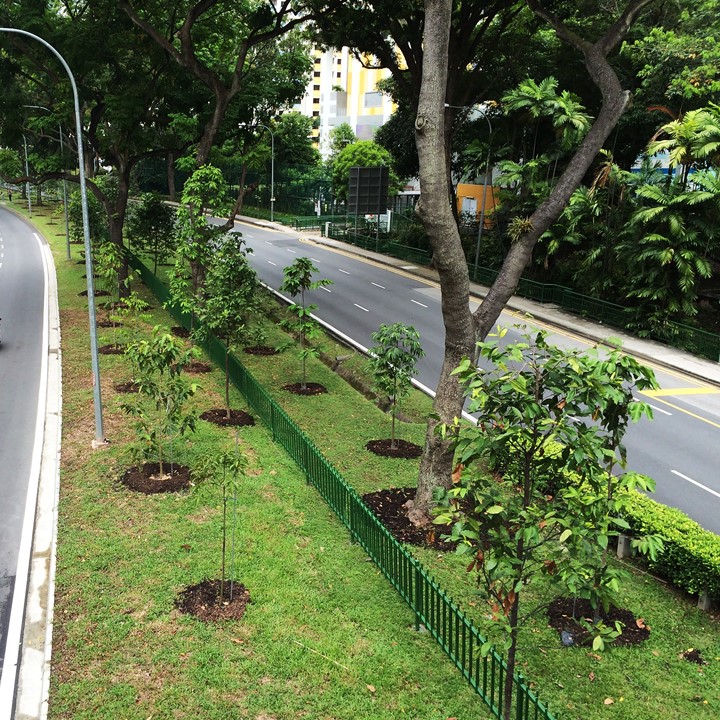
A good start helps.
Tree planting is essential to sustaining an urban forest. Good tree planting practices, together with a dose of patience and dedication, will go a long way in helping young trees grow healthily into mature green giants!
Selecting the right tree species that suits the planting location is important to ensure the longevity of the tree. Some useful considerations include the availability of light and water at the planting location, how much space is available for tree growth, and the distance of the planting location to any nearby infrastructure.
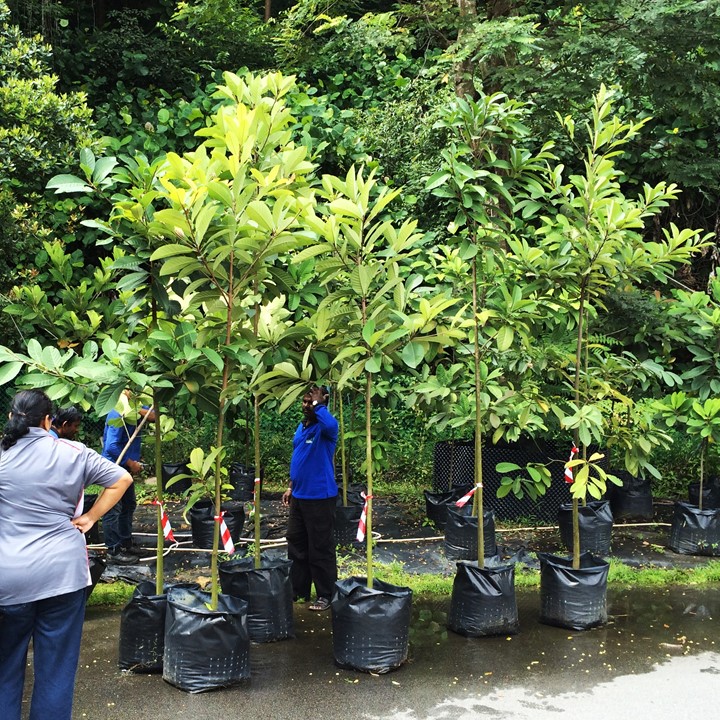
Having good form is also important. The trunks of saplings should be straight and sturdy, with good balance between the shoot and root systems. Saplings should be free of physical damage, pests and diseases. When preparing the planting location for the tree, a planting hole of a suitable size should be carefully dug, and filled with soil of a suitable texture and nutrition quality. Urban soils that are compacted, too acidic/alkaline, saline, nutrient-poor, or contaminated with pathogens, can quickly result in death or stunted growth of the sapling.
Once the sapling is planted, mulch applied around its base will help to conserve moisture and promote plant nutrition. Sturdy poles are inserted to help the sapling stay upright, and a PVC guard could be installed around the base to prevent mechanical damage by grass-cutting and other vehicular activities. Alongside regular watering, these will help the sapling establish and grow well.
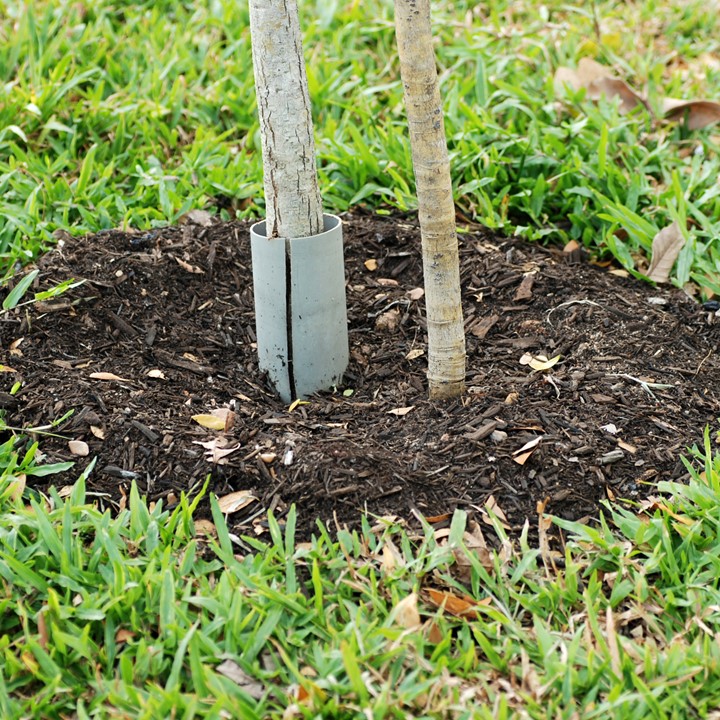
Feed me!
As urban soils are often less rich in nutrients compared to forest soils, periodical fertilisation will help trees remain healthy and robust. Trees require several nutrients in substantial quantities – particulary nitrogen, phosphorus and potassium – and these can be supplied in the form of liquid fertilisers or granular slow-release fertilisers. Fertilisers can either be spread around the base of the tree, or placed into holes dug around the tree roots. Regular application of a layer of organic mulch around the tree base can also improve tree nutrition and the soil quality surrounding the tree. Appropriate types of mulch include composted wood chips, leaf litter and grass clippings.
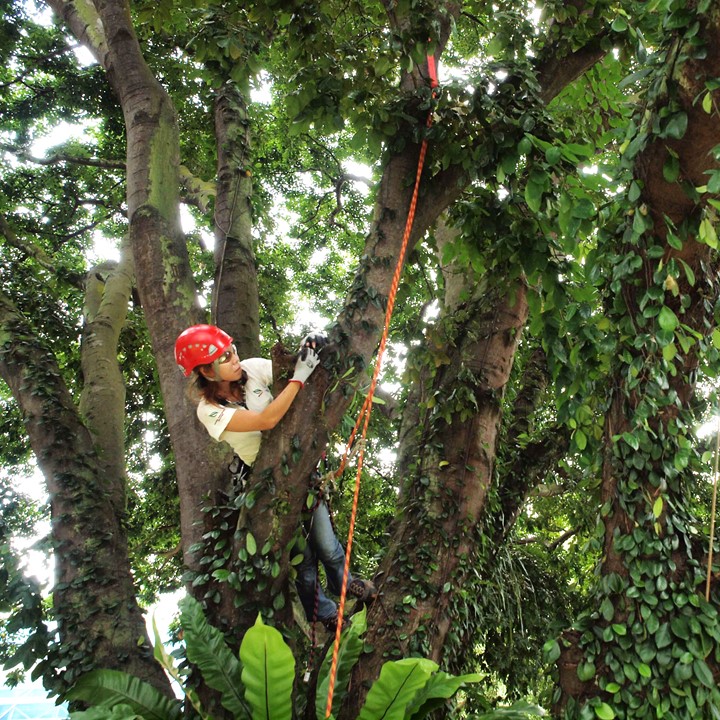
Time for a check-up!
Trees may not be able to talk, but their appearance and “body language” can inform us about their health. Professional arborists (a.k.a. “tree doctors”) are trained to examine trees in a rigorous and systematic manner, by studying their overall form, roots, trunk, branches and crown. They are able to identify the signs and symptoms that are typical of trees that are deteriorating, and can prescribe measures that may improve the health of these trees.
An arborist usually inspects a tree using the Visual Tree Assessment (VTA) technique. This standard inspection technique, recognised by the International Society of Arboriculture, guides arborists to look out for any observable signs and symptoms of a tree that may be unhealthy or unstable.
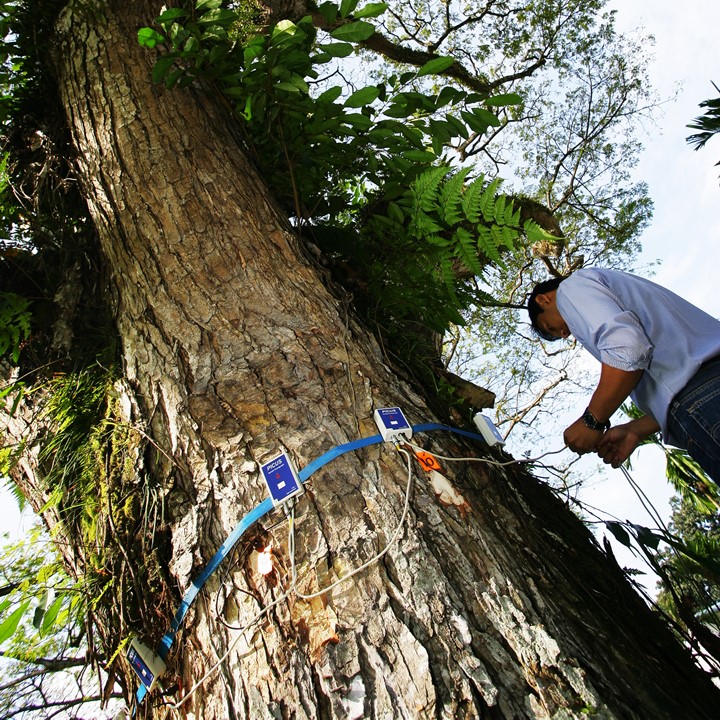
Based on the outcome of the VTA, an arborist may wish to further investigate the tree’s internal condition using more advanced technology. A resistograph, which drives a microdrill into wood at a constant speed, may be used to detect any internal defects inside a tree trunk or branch. Higher resistograph readings reflect high wood density, whereas lower readings may indicate the presence of decay or a cavity. An arborist may also use a sonic tomograph, which is based on the principle that sound travels faster through solid wood than decayed wood. By placing multiple sensors around a tree trunk, and transmitting sound from different points around the tree towards these sensors, the sonic tomograph can “look inside” the tree by way of extrapolation, and indicate the portions that are hollow or decayed.
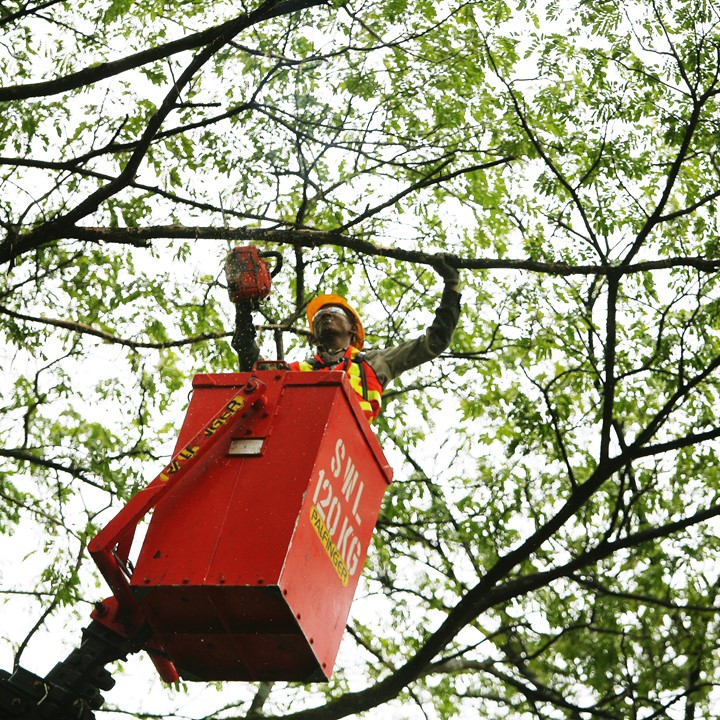
“What kind of haircut would you like?”
Unlike forest trees, which assume various forms or shapes based on their growing environment, trees in urban environments need to be pruned for various reasons. Young trees are pruned to direct their growth, ensuring that their mature form is structurally desirable. The branches of roadside trees may be pruned when they grow into the path of pedestrians or vehicles. Trees may also be pruned to look tidy and attractive. Mature trees require pruning to remove dying or diseased branches, to lighten any heavy branches, and to reduce the wind resistance of the entire canopy.
After inspecting a tree, an arborist may prescribe specific methods of pruning in order to improve the health and safety of the tree, such as crown thinning and crown reduction. It is important that trees are pruned correctly to keep them aesthetically appealing and healthy.
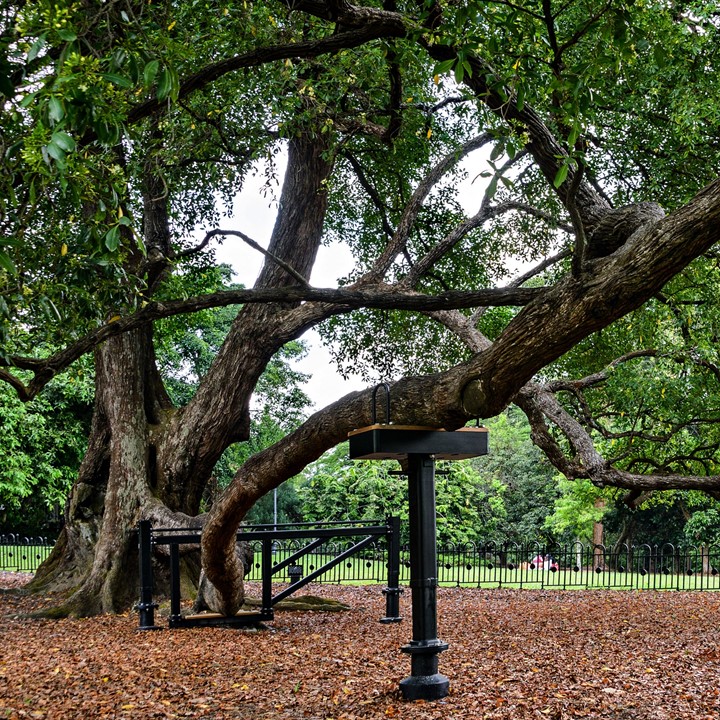
Some extra love to the seniors.
When a mature tree of high value (e.g. a Heritage Tree) is found to be weakening structurally, tree support systems can be installed in order to safely prolong its life expectancy. An arborist may install cables or braces to limit the movement of tree trunks and large branches. A mature tree may even be held upright with prop structures built on the ground! The decision to install a tree support system usually depends on the mature tree’s value, as well as the surrounding site conditions.
Lightning protection systems can also be installed onto tall mature trees that are at risk of lightning damage. When lightning strikes a tree with a lightning protection system, the strong electrical current is channelled from the top of the tree into the ground via a copper cable, instead of through the tree’s branches and trunk, thus protecting the tree from damage. In Singapore, many Heritage Trees are protected with lightning protection systems.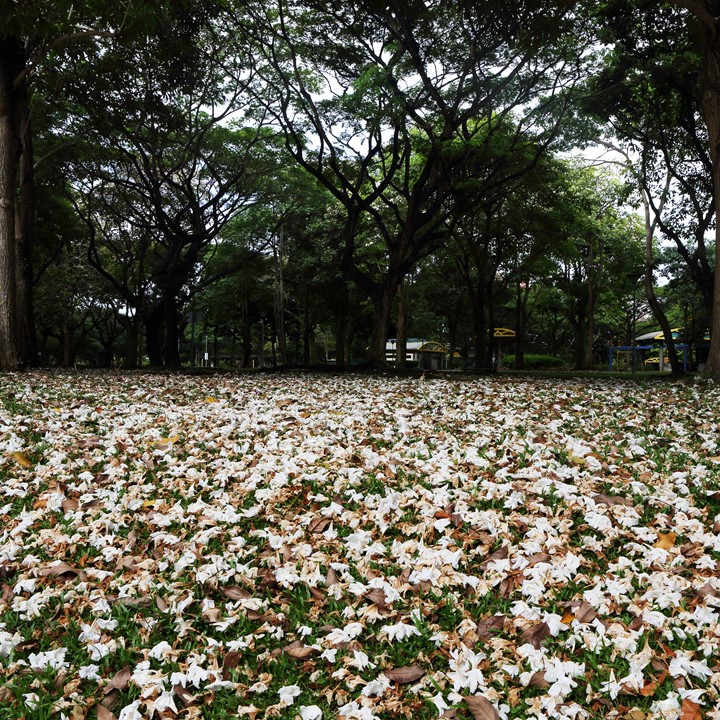
An ever-changing urban forest.
As with all living things, trees will age and eventually deteriorate due to pests, disease, and environmental stressors such as drought or storm damage. In an urban environment, trees are subject to additional stresses such as pollution, soils that are less rich in nutrients and disturbances to their root zones, due to various development works. Mature urban trees can also decline in structural stability when they become too large for their growing locations. In addition, certain fast-growing self-sown tree species, such as the Albizia (Falcataria moluccana) and African Tulip (Spathodea campanulata) inherently have brittle wood and shallow rooting systems that make them prone to branch breakage and uprooting during storms, especially when they mature.
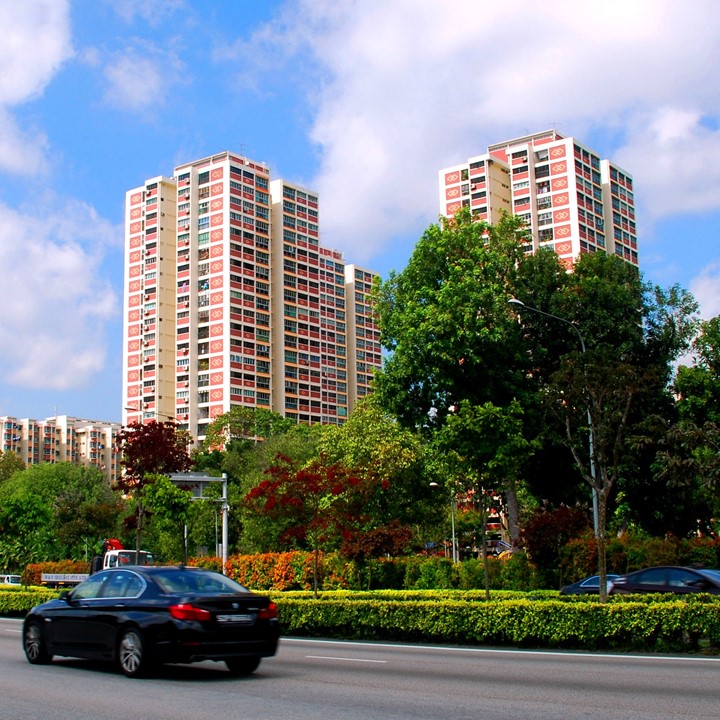
While a deteriorating tree can be allowed to weaken naturally in a natural forest system, public safety in an urban setting requires a proactive approach to replace such trees. When trees are retired, each one is usually replaced with one or more saplings. Newly planted saplings instantly increase the diversity of tree species in our urban forest, mimicking the biodiversity and structure of a natural forest. In time to come, these saplings will mature into the green giants who once stood in their place.
Just like how a natural forest is an ever-changing landscape, with young seedlings always rising from the forest floor to take the place of old canopy trees, the urban forest is in a constant state of regeneration. Best practices employed by tree care professionals can help ensure that our urban forest is sustainably-managed and safeguarded for generations of Singaporeans to come.

